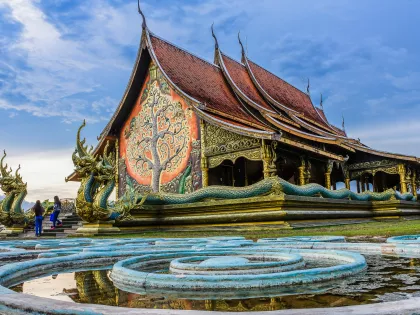Getting Greetings Right in Different Cultures
"When in Rome, do as the Romans do." It is always wise to study a country's etiquette and customs before your intended visit in order to avoid misunderstandings or offending the local people. Greetings are different around the world. They are influenced by beliefs, customs, and religions. Knowing how to greet people appropriately in different countries will always bear fruit, whether you are just visiting, working, or settling in that country.
Here's how you greet people in some parts of the world!
1. The Philippines
Mano or Pagmamano is an honouring gesture that is usually practised when greeting the elderly. This is practised by the younger generation. You must always ask for permission to perform a mano and it is considered ill-mannered not to show respect by practising the custom of mano when you visit your elders in their home, or see them at a social event. Respect for one's elders is one of the greatest core values for Filipinos.
How to do it: It's similar to a hand kiss gesture. Instead of kissing an older person's hand, you press your forehead gently on to their hand. The recipient then gives you blessings or words of wisdom.
2. Tibet
Interestingly, sticking one’s tongue out is a traditional way to greet and show respect to Tibetans. Based on Tibetan ancient folklore from the 9th century, one barbaric king had a black tongue. Since then, people started sticking their tongues out to show that they are neither cruel like him nor like his reincarnation.
How to do it: If you encounter a local sticking their tongue out at you on the street, you can do the same thing back, or you can greet them by saying "Tashi delek" which means wishes of good health, blessing, and luck. "Tashi dalek" is widely heard among family, friends, and even strangers.
3. Thailand
The first thing you might notice when you land in Thailand is advertisements showing people performing the wai. The famous wai gesture is a traditional form of greeting in Thailand. Thai people will wai as a reverent gesture towards a Buddha statue or Buddhist monks, and also to show respect to parents, teachers, relatives, or the elderly. However, the wai does not only mean 'hello', but is also generally used by Thai people as a means to say 'thank you' and 'sorry' too.
How to do it:
Step 1: Put your palms together in the middle of your chest. Keep your elbows close to your body.
Step 2: Slightly bow down until your forehead touches your index fingers
Step 3: For a female speaker, say "Sawasdee ka" for hello, "Kob khun ka" for thank you and "Kor tod ka" for sorry. Similar forms are used by male speakers, but the word 'ka' is replaced by 'krup'.
4. New Zealand
Although a firm handshake is the most common greeting gesture between strangers for a majority of Kiwis, the Maori, the indigenous people of the country, ritually greet each other with the sacred Hongi or the sharing of breath.
How to do it: Two participants press their noses and foreheads against one another with eyes closed and breathe simultaneously, cherishing the same moment of breath and the significance of being together. The Hongi is considered much more powerful than a handshake and is generally practised at formal Maori events.
5. Botswana
If you are travelling to Botswana, known as the Gem of Africa, it is useful to learn the Botswana handshake. It is considered very impolite if you ask a local for a favour without first exchanging pleasantries, and in Botswana that means engaging in this coolest of all handshakes.
How to do it:
Step 1: Extend your right hand as you would for a normal Western handshake, but place your left hand under the right elbow. Make contact just as you would normally expect.
Step 2: What starts as a normal handshake suddenly changes as you both lock thumbs. This would take you by surprise if you didn't know what to expect.
Step 3: Switch back to the normal grip and say "Le kae?" This means 'how are you?' If you want to travel to other parts of Africa, you'll find similar handshakes to this one, although many insert additional moves and some can go on for much longer than you think! Just try to keep up, and enjoy talking to your new friends.








Share-
-
-
-
URL copied to your clipboard